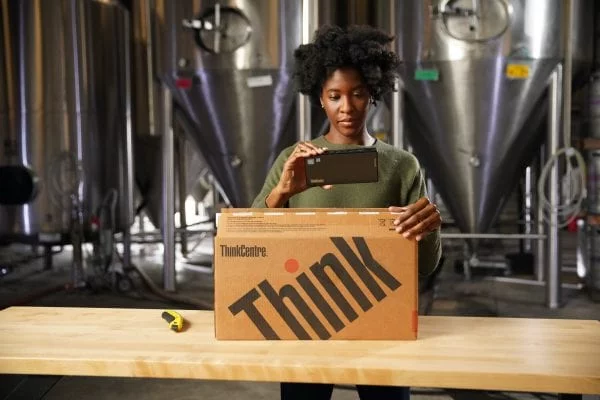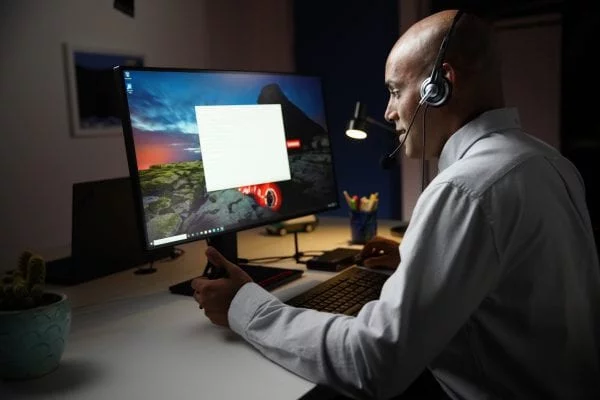Lenovo™ and Intel®-sponsored study looks into how updating technology can improve productivity, employee engagement and customer satisfaction.
- IT leaders say they plan to nearly double their investment in employee experience (EX) initiatives over the next two years.
- Nearly 60 percent of IT leaders note a 10 percent increase in EX scores by improving employee satisfaction with technology.
- While 50 percent of employees feel their PC devices are out-of-date, 84 percent of ITDMs believe workers can easily switch or upgrade. With better communication to bridge these two groups, there exists better potential for a more satisfying employee experience.
October 28, 2020 – A new Lenovo and Intel commissioned study, “Empower Your Employees with the Right Technology,” conducted by Forrester Consulting, has found that the impact of technology in improving the employee experience (EX), or an employee’s full journey in an organization, is much more than anticipated — highlighting opportunities for organizations’ IT decision makers (ITDMs) in today’s remote and hybrid work environment. The key insight points out that while companies on average see a 5x return on investment in the EX driven by increased productivity, organizational agility and customer satisfaction, ITDMs and employees disagree on technology priorities. While ITDMs are prioritizing strategic IT integration, software and service needs, employees are more focused on their fundamental daily technology experience. This suggests that business leaders have room to collaborate more closely with employees on their IT purchase decisions to elevate team engagement, increase customer satisfaction and improve the bottom line.
Bridging the divide between employees and IT decision makers
With organizations now shifting their focus toward remote and hybrid work, ITDMs are upgrading devices, software and services as part of EX initiatives to improve team engagement and satisfaction. Based on the research findings, this has led to more tech spending. IT leaders are reporting a 5x return (USD $1 spent on these programs yields USD $5 of increased staff productivity, organizational agility and customer satisfaction), with many expecting to increase their investment by nearly 25 percent in two years.
Yet employees still report that they’re frustrated with their PC hardware and software experience:
- Fifty (50) percent of respondents say their PC devices are out of date or insufficient (e.g. not fast enough, reliable enough or powerful enough)
- Forty-six (46) percent note their software frequently malfunctions and disrupts their work
- Only 33 percent are extremely satisfied with the current laptop provided by the company
- Only 30 percent said their laptops or desktop work well for cross-collaboration.

Importantly, ITDMs and employees both define employee satisfaction with technology as a crucial goal. Satisfaction with technology also has the greatest observable positive impact: nearly 60 percent of ITDM respondents noted a more than 10-percent increase in EX scores by improving employee satisfaction with technology. It’s evident that IT departments and the technologies they offer are instrumental to driving EX, beyond conventional factors such as human resources, worker benefits and more.
Yet again, there is a clear disconnect between employees and these ITDMs, whose primary concerns are the longevity of their technology investments rather than its impact on team engagement. According to the study, whereas 84 percent of ITDMs believe employees can easily switch to a different PC device if their current one needs to be replaced, only half of employees agree that’s an available solution. Ultimately, both ITDMs and employees agree that refresh cycles can be improved and better aligned. In addition, ITDMs believe the integration of hardware and software will impact EX the most, whereas employees simply want devices that work consistently.
Prioritizing employees to better leverage technology investments
The study outlines a few key recommendations on how business leaders can better improve employee engagement and business outcomes through technology investments.
- Realign investments. While many ITDMs are investing resources into exploring newer, emerging technologies such as 5G, augmented and virtual reality (AR/VR), and artificial intelligence (AI) or machine learning tools, based on worker respondents’ feedback there is an opportunity to focus first on immediate employee priorities—building a strong foundation of collaboration tools and PC devices—while IT departments explore more advanced technology tools in parallel.
- Reorganize priorities. Decision-makers should also focus on improving EX vs only focusing on specific productivity metrics. In fact, according to the study nearly 80 percent of ITDMs plan to focus on improving employee engagement over the next few months.
- Focus on PCs. PCs have become critically important to employees, with 77 percent of full-time employees saying that PC devices are a critical factor in their daily work and collaboration with one another. A renewed focus on PCs can make the greatest impact on the bottom line and customer satisfaction, with most respondents agreeing that PC devices are critical to increasing customer satisfaction (69 percent), revenue growth (62 percent) and employee retention (55 percent).
- Involving employees in PC investment decisions. Overwhelmingly (72 percent) of employees responded that listening to workers or getting clarity on what they need ranks in the top three of what companies should do to improve EX. This feedback is important, as employees understand their work devices’ value in driving business outcomes, based on technology factors such as performance, connectivity, reliability, portability, size/weight, battery life and more. Listening to employee feedback can go a long way towards making the case for better technology options.

“Our new study findings further affirm our belief in the strategic importance of technology as critical investments, and not as simple transaction costs. The right deployment of technologies delivering returns can far exceed the initial expense of new business models and opportunities,” said Christian Teismann, President, Commercial PC and Smart Devices Business, Lenovo. “Given employees are a company’s greatest asset, the study further maps out opportunities to uplift the return on technology investment by focusing on PC devices and collaboration tools, while better involving employees in purchase decisions. In today’s new remote and hybrid work set-up, these steps are pivotal for companies in yielding opportunities that go far beyond the initial spend on their technology.”
Visit www.lenovo.com/EnterpriseSolutions for the full study findings.
About “Empower Your Employees with the Right Technology” Research Methodology
Between July and September 2020, Forrester conducted a survey of 1,014 IT decision makers at global enterprises responsible for IT purchasing decisions and end user computer strategy; 1,845 global full-time workers that predominantly work with laptops; and in-depth interviews with nine global key decision makers. Respondents surveyed were from China, France, Germany, India, Italy, Japan, Mexico, the UK and US.
About Lenovo
Lenovo (HKSE: 992) (ADR: LNVGY) is a US $50 billion Fortune Global 500 company, with 63,000 employees and operating in 180 markets around the world. Focused on a bold vision to deliver smarter technology for all, we are developing world-changing technologies that create a more inclusive, trustworthy and sustainable digital society. By designing, engineering and building the world’s most complete portfolio of smart devices and infrastructure, we are also leading an Intelligent Transformation – to create better experiences and opportunities for millions of customers around the world. To find out more visit https://www.lenovo.com, follow us on LinkedIn, Facebook, Twitter, YouTube, Instagram, Weibo and read about the latest news via our StoryHub.
LENOVO is a trademark of Lenovo. Intel, the Intel logo and other Intel marks are trademarks of Intel Corporation or its subsidiaries. FORRESTER is a trademark of Forrester Research, Inc. All other trademarks are the property of their respective owners. ©2020, Lenovo Group Limited.


